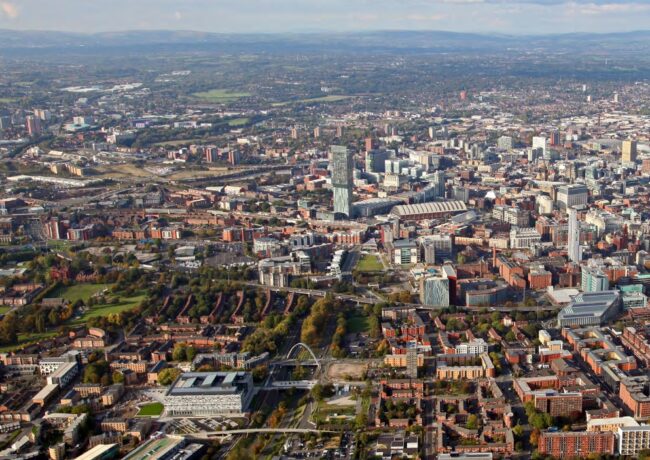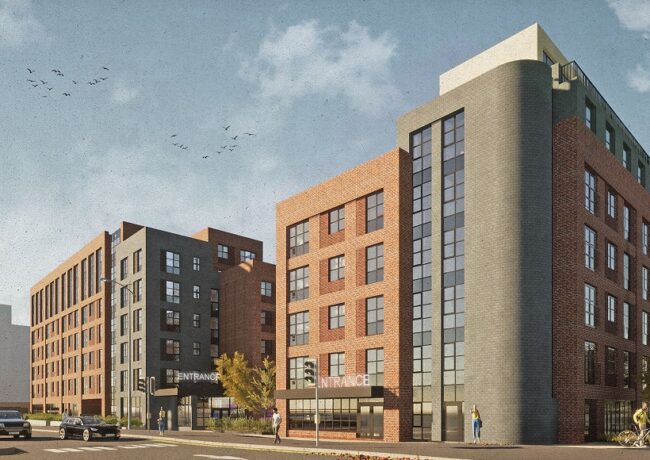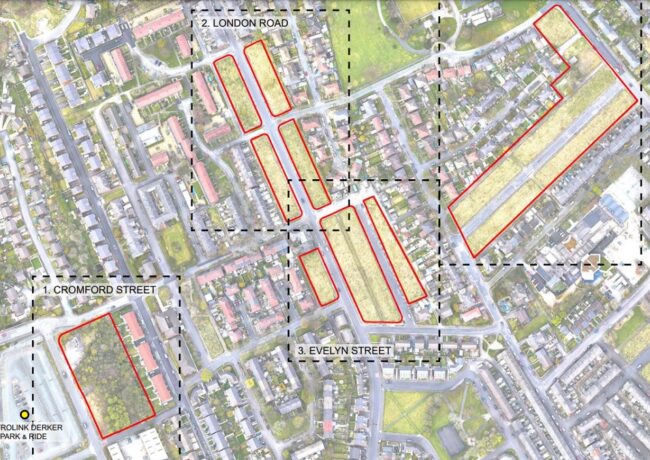Young still aspire to home ownership, says HtP
A survey conducted by Ipsos Mori on behalf of lobby group Housing the Powerhouse has found that while 80% of young people say owning a home is important to them, in Greater Manchester 44% are not confident of being able to buy one.
The aim of the survey, which received responses from 2,000 people across the 10 local authority areas and was carried out over 10 days in May and June, was to understand the types of properties people live in, their housing aspirations and their means of climbing the housing ladder.
HtP last month responded with alarm to Communities Secretary Sajid Javid’s proposed standardised method of calculating housing need, describing it as “inadequate” for cities such as Manchester. The group, which is made up of the Home Builders Federation, Greater Manchester Chamber of Commerce and other developers and housebuilders, is largely supportive of the proposed Greater Manchester Spatial Framework, but has previously said could be more “ambitious”.
Mayor Andy Burnham’s reworking of the GMSF is expected to include a greater emphasis on a wider mix of housing, and a focus on the Greater Manchester towns, rather than the apartment-heavy city centre market.
According to those surveyed:
- 83% agree that it will be harder for young people to get the home they want
- 52% know someone who is struggling to get on the housing ladder
- 60% agree that unless more homes are the built, the housing crisis will never be resolved
- 52% agree that more homes are needed in their local area to meet demand
The results of the survey suggest that home ownership remains an aspiration for people overall and for young people in particular, with 84% of 25-34 year olds agreeing that owning a home is important to them.
Out of all respondents, 80% said they aspire to owning a home in the suburbs, and 84% said it is important to them to have a home with a private garden, with 68% wanting a private garage or driveway.
Just 8% said they wanted to live in an apartment in the city. Young people aged 18-24 are most likely to want to live in the city, with 22% stating that preference.
A third of respondents are looking to move home in the next five years, with this figure highest in Manchester, Salford and Oldham. However, 30% of aspiring movers are not confident of being able to buy a home, a figure that rises to 44% among 18-24 year olds.
There is support for Green Belt release where this will result in additional investment to develop wider infrastructure and services in communities.
On behalf of HtP, James Stevens, director for cities at the Home Builders Federation, said: “The poll confirms that home ownership is an important, cross-generational aspiration, but in particular for young people in Greater Manchester.
“Moreover, like generations before them, younger people dream of owning a traditional home in the suburbs. Yet at the same time, there is widespread pessimism about their prospects of owning a home. The challenge for authors of the Greater Manchester Spatial Framework is to deliver enough land, in the right places, to build the homes that will allow young people in Greater Manchester to achieve their housing aspirations.”
The full data from the survey is available to view online.





And how will HtP’s members building £500k houses in the green belt address this?
By Nordyne
Because someone living in a £400k house will move into the new £500k house, someone living in a £300k house will move to the £400k house vacated, and someone living in a £200k house will move to the £300k house and so on. The current GM housing market is best described a constipated!
By Unaplanner
People don’t want houses despite the act they’re going up in value, they want them BECAUSE they’re going up in value.
By Lin
Still no need to use the green belt when there is so much brownfield around!!
By .
There is zero correlation between the interests of HtP and improving affordability or supply. They just want a guaranteed pipeline of cheap sites to maintain their profitability.
By Not falling for it
We need more houses with gardens, fewer flats that nobody wants to live in long term.
By Stormer
No, we need more high quality apartments and fewer unsustainable houses with gardens. We’re a small country, we need to move away from the ridiculous “suburban dream” and start adopting a more sustainable lifestyle which isn’t so car-dependent.
Suburbia = slow death
By Anonymous
People do want to live in flats, and density on brownfield sites in the city centre is an important factor in improving the housing situation. We have the lowest density levels in western Europe.
By Anonymous
Apartment living is fine for some, but when people start a family they need space, a garden and probably two cars.
By Amon
How can 63 million people on this tiny island be low density, look at France, Germany, Spain, all far larger than the UK.
By Stormer
Stormer – anonymous wasn’t talking about the whole country, s/he was referring to in terms of builds. We still insist on wasteful US-style suburban wonderlands, with all the inaccessibility that goes with that.
Problem the UK has isn’t the overall population/density, its that infrastructure investment hasn’t sufficiently kept pace with population growth. Debate the reasons for that as you wish, but its a fact.
By Town Planner
Stormer,
try reading a little into the subject. The UK is far from full:
https://www.theguardian.com/world/2016/feb/09/is-britain-full-home-truths-about-population-panic
By Mis-Manager
Thought England was the most densely populated place in Europe? I know the UK isn’t due to vast swathes of Scotland and Wales being thinly populated, but England alone is very densely populated, particularly the South East and the North West.
By Elephant
How are we ‘full’? Lancashire was the most densely populated place on earth at the end of the 19th century and Manchester was in the top 10 most populated cities on the planet, all those areas have seen either falling or stagnating populations. Blackburn/Preston/Burnley have not seen population growth for half a century.
By Logenberry
Loganberry is correct. The South Lancashire megalopolis between Liverpool and Manchester once had over 5 million people living in it and was the first real megalopolis in the industrial world. Even in My lifetime it was possible to drive from Oldham to Liverpool without seeing open countryside because of the intensity of the industry.
By Elephant
That’s an exaggeration, Elephant. The South Lancashire coalfield was never so densely industrialised. Yes, there were hundreds of collieries, but these were spread about and never created the industrial megalopolis that you reminisce about. The extensive pit heads and winding gear never obscured the countryside. That assertion is pure fiction…
By Monty Con
I am not just talking about coalfields.All the towns from Oldham on the Yorkshire border to Liverpool were heavily industrialised.It was possible to drive between the two without seeing countryside when I was a child in the late 60s.The North West was not just coalfields.
By Elephant
The main east-west trunk roads through the north west of England (A57, A58, A580) were never fully industrialised along their lengths, or even majority industrialised, to the extent that a traveller would see an unbroken industrial megalopolis.
By Monty Con
At the risk of being pedantic, one of defining characteristics of the mill towns that ring GM to the north and east is that bump up against the Pennines. When you are brought up in places like Rochdale and Oldham you see the moors from almost anywhere in the town, and you realise that industrialisation has a very ribbon like quality as it sits in valley floors, but as you come out of the valleys it thins out and countryside (admittedly, often quite bleak moorland countryside) emerges. That’s why when you travel and around those towns on the main roads than run down those valleys it does feel like a continuous industrial landscape. The echo a point made earlier, more generally coal mining is a little bit like that, it’s an industrial process that’s often situated in countryside. One of the tragedies of the closure of coal mining by the Tories was how isolated those communities where from other employment opportunities (Lancs coalfield arguably faired better in that regard than other parts of UK).
By Rich
Hairsplitting. It hardly looked like Norfolk did it.
By Elephant
All good points, chaps, thanks.
The post-industrial “scarred countryside” legacy is a bit of a myth. There’ll be far more damage done by the expanding logistics and distribution industries than what coal and cotton ever did.
I’ve lived in the middle of this “unbroken industrial megalopolis” all my life and have always been impressed at how much attractive greenery there is. Example: St. Helens towards Ormskirk. Apart from a few houses at Rainford there’s nowt but eight miles of open fields. And that’s not a one-off either. In lots of directions there are miles of never-developed land. And so on…
By Monty Con
I am talking about real Lancashire.Not Ormskirk.
By Elephant